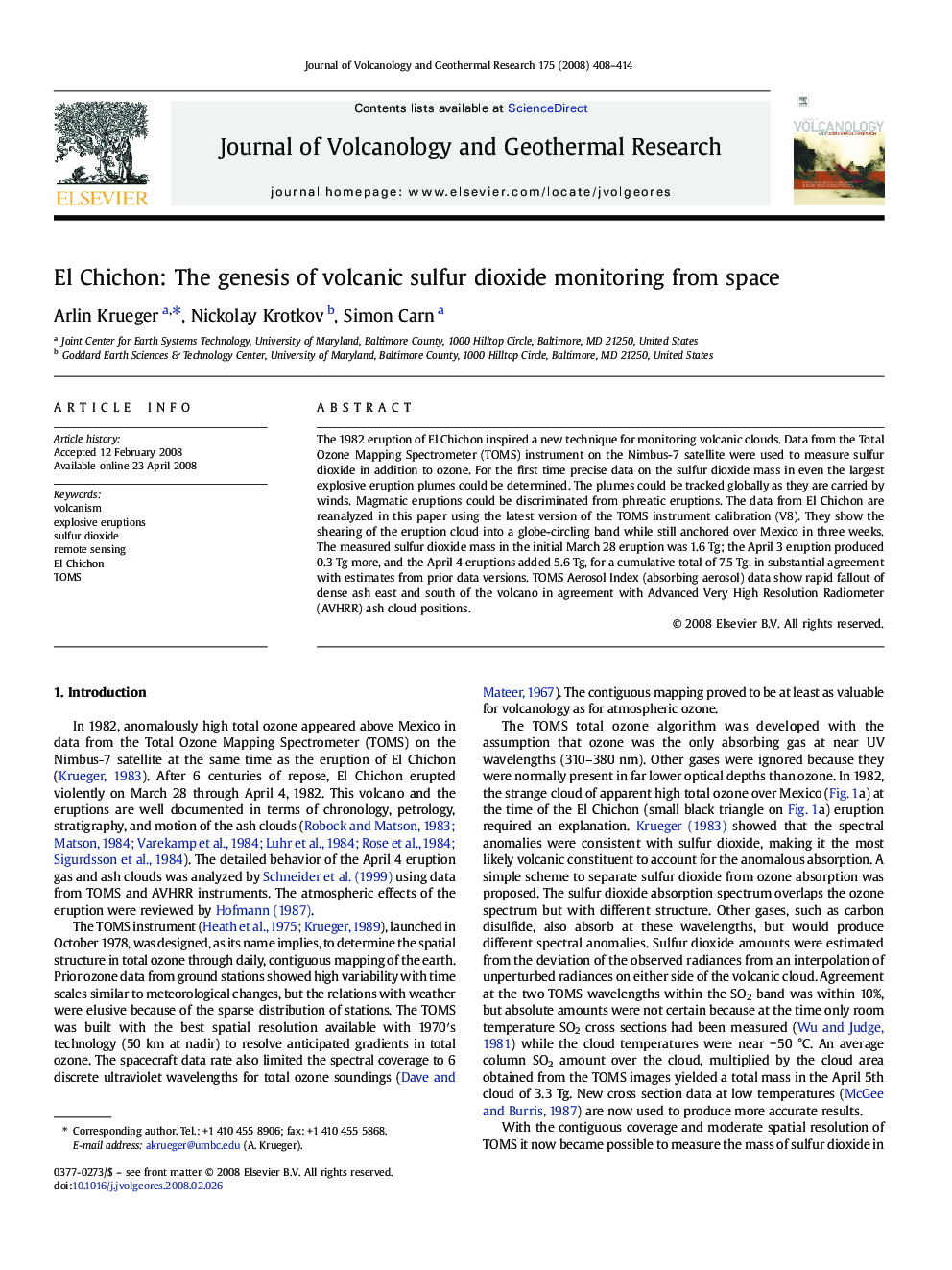| Article ID | Journal | Published Year | Pages | File Type |
|---|---|---|---|---|
| 4715279 | Journal of Volcanology and Geothermal Research | 2008 | 7 Pages |
The 1982 eruption of El Chichon inspired a new technique for monitoring volcanic clouds. Data from the Total Ozone Mapping Spectrometer (TOMS) instrument on the Nimbus-7 satellite were used to measure sulfur dioxide in addition to ozone. For the first time precise data on the sulfur dioxide mass in even the largest explosive eruption plumes could be determined. The plumes could be tracked globally as they are carried by winds. Magmatic eruptions could be discriminated from phreatic eruptions. The data from El Chichon are reanalyzed in this paper using the latest version of the TOMS instrument calibration (V8). They show the shearing of the eruption cloud into a globe-circling band while still anchored over Mexico in three weeks. The measured sulfur dioxide mass in the initial March 28 eruption was 1.6 Tg; the April 3 eruption produced 0.3 Tg more, and the April 4 eruptions added 5.6 Tg, for a cumulative total of 7.5 Tg, in substantial agreement with estimates from prior data versions. TOMS Aerosol Index (absorbing aerosol) data show rapid fallout of dense ash east and south of the volcano in agreement with Advanced Very High Resolution Radiometer (AVHRR) ash cloud positions.
